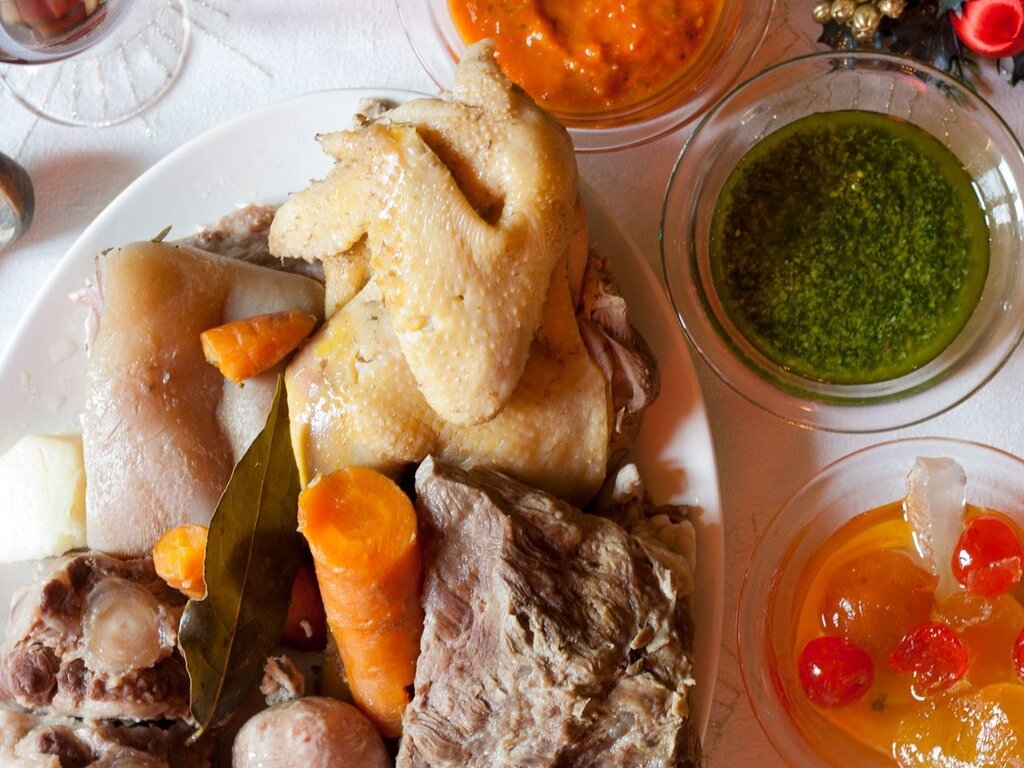The 'Fiera del Bue Grasso' is an important and always sweetly awaited annual event for the people of Carrù, characterised by the preparation of the typical dish: boiled meat, a monument of Italian gastronomic tradition.Its simple but long and patient preparation in times of culinary haste has made it less and less common on family tables, but it is much loved by those who know a thing or two about cooking.
There are those who dedicate verses to it, those who hold fairs and gastronomic evenings, those who promote tasting competitions, and those who let themselves be tempted by the sauces that accompany it. And some of us even eat breakfast with it...
Opulent, fragrant, steaming: the Italian bollito is one of the most monumental dishes of the Carrù winter gastronomic tradition.
Great because it is an ideal recipe for banquets of at least 12 people. Succulent and nutritious, suitable for restoring body and appetite from the rigours of the cold season.
There's no doubt about it: Bollito Misto alla piemontese has made its mark on Italian gastronomy.In literature, bollito appeared in 1887 in 'Cucina Borghese Semplice ed Economica', published by Vailardi and by an unknown author. To talk about "gran bollito", the favourite dish of Vittorio Emanuele II, it is necessary to quote the "rule of seven" by giovanni goria, academician of cuisine. The Italian Academy of Cuisine has reconstructed the recipe, calling it the "great historical Piedmontese Risorgimento bollito".
The great Piedmontese mixed boiled meat is made up of seven cuts: tenderon, scaramella, leg muscle, shin, shoulder, fiocco di punta, cappello del prete. The seven ornaments are cooked in different pots: calf's head complete with snout, tongue, trotter, tail, hen, cotechino and rolata.
The great single dish should be completed with at least three of the seven bagnetti (a kind of sauce) proposed by tradition. The most classic are the rustic green bagnet (bagnet vert), a sauce made from parsley, anchovies, garlic and stale breadcrumbs; the red bagnet (bagnet ross), with tomatoes, garlic, mustard and red vinegar, horseradish, a particularly tangy horseradish sauce or a honey sauce. These are tasty, colourful and consistent ideas, often sour or sweet and sour, which are useful for awakening the palate.
The tradition of boiled meats in Piedmont has a long history, originating in the custom of livestock markets that have been held in Carrù (Cuneo), the capital of boiled meats, since 1473. Since 1910, this splendid little island of ours has celebrated the Fiera del Bue Grasso (Fat Ox Fair) on the second Thursday before Christmas: a great feast of flavours in which the great boiled meat finds its moment of pure glory!
